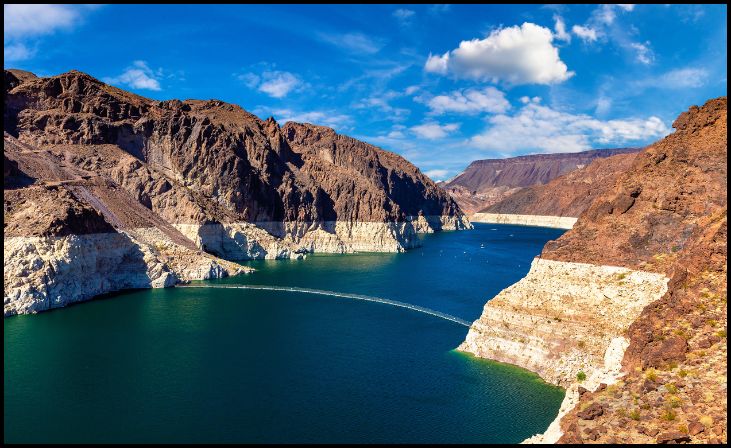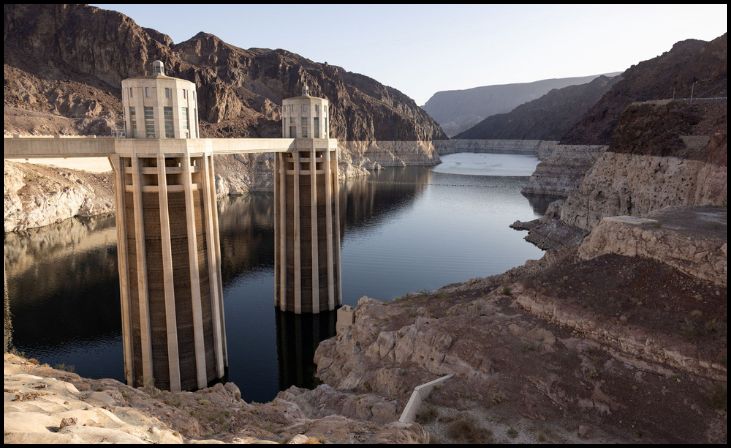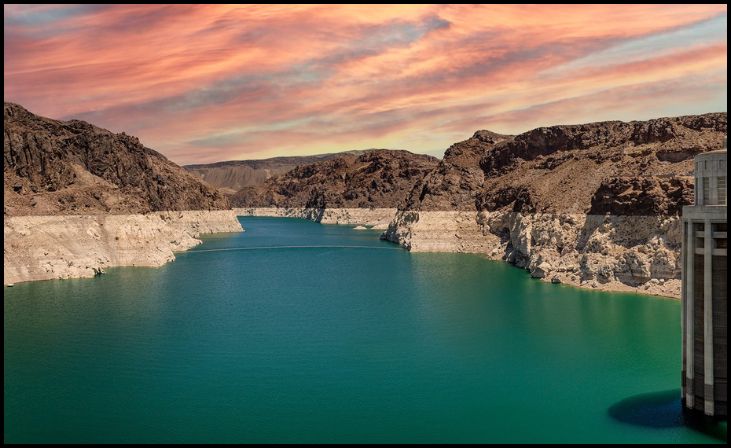Lake Mead, the largest reservoir in the United States, is undergoing a significant transformation as its water levels fluctuate at a rate not witnessed in many years. This iconic body of water, nestled amidst the arid landscapes of the American Southwest, holds immense importance both historically and presently. However, recent developments have sparked concerns and prompted urgent action to address the challenges posed by its declining water levels.
Unprecedented Rate of Change

The current state of Lake Mead reflects a remarkable shift, with water levels experiencing fluctuations at a pace that surpasses historical norms. According to recent data, the reservoir’s water levels have been steadily declining, marking a departure from previous patterns of stability. The magnitude and rapidity of this change underscore the gravity of the situation, necessitating a comprehensive understanding of the factors at play.
Factors Contributing to Decline
Several interconnected factors contribute to the diminishing water levels of Lake Mead. Foremost among these is the persistent drought gripping the region, exacerbated by climate change and fluctuating weather patterns. Additionally, human activities such as excessive water consumption and inadequate conservation practices further strain the already limited water resources. Environmental variables, including increased evaporation rates and reduced snowpack in upstream areas, compound the challenges faced by the reservoir.
Implications for Water Supply
As the primary source of water for millions of people in the Southwest, the dwindling levels of Lake Mead pose a significant threat to regional water security. The reservoir’s capacity to sustain communities, support agriculture, and facilitate economic activities is increasingly compromised as water scarcity looms. The potential ramifications extend beyond immediate concerns, highlighting the imperative for proactive measures to safeguard water availability for future generations.
Impact on Hydropower Generation

In addition to its role in water supply, Lake Mead plays a crucial role in hydropower generation through the Hoover Dam. The declining water levels directly impact the dam’s ability to produce electricity, reducing its efficiency and output. This decline in hydropower generation underscores the interconnectedness of water management and energy production, necessitating holistic approaches to address the challenges posed by changing environmental conditions.
Historical Context and Comparison
To contextualize the current situation, it is essential to examine historical water levels in Lake Mead. Comparisons with past data reveal the unprecedented nature of the present circumstances, with current levels approaching historic lows. The stark contrast underscores the urgency of action and the need for innovative solutions to mitigate the impacts of dwindling water resources.
Management Efforts and Policies
Recognizing the gravity of the situation, stakeholders in the Colorado River Basin, which includes Lake Mead, are actively engaged in efforts to address water management challenges. Collaborative agreements and policies seek to promote sustainable water usage and allocation, emphasizing the importance of collective action in navigating complex water issues. These initiatives reflect a concerted commitment to long-term resilience and adaptive governance in the face of evolving environmental conditions.
Call for Conservation

Amidst the challenges posed by declining water levels, there is a pressing need for concerted conservation efforts at individual, community, and institutional levels. Residents, businesses, and agricultural operations are urged to adopt practices that promote water efficiency and minimize waste. By embracing conservation measures and embracing sustainable water management practices, stakeholders can contribute to the preservation of Lake Mead and ensure the continued availability of this vital resource for future generations.






